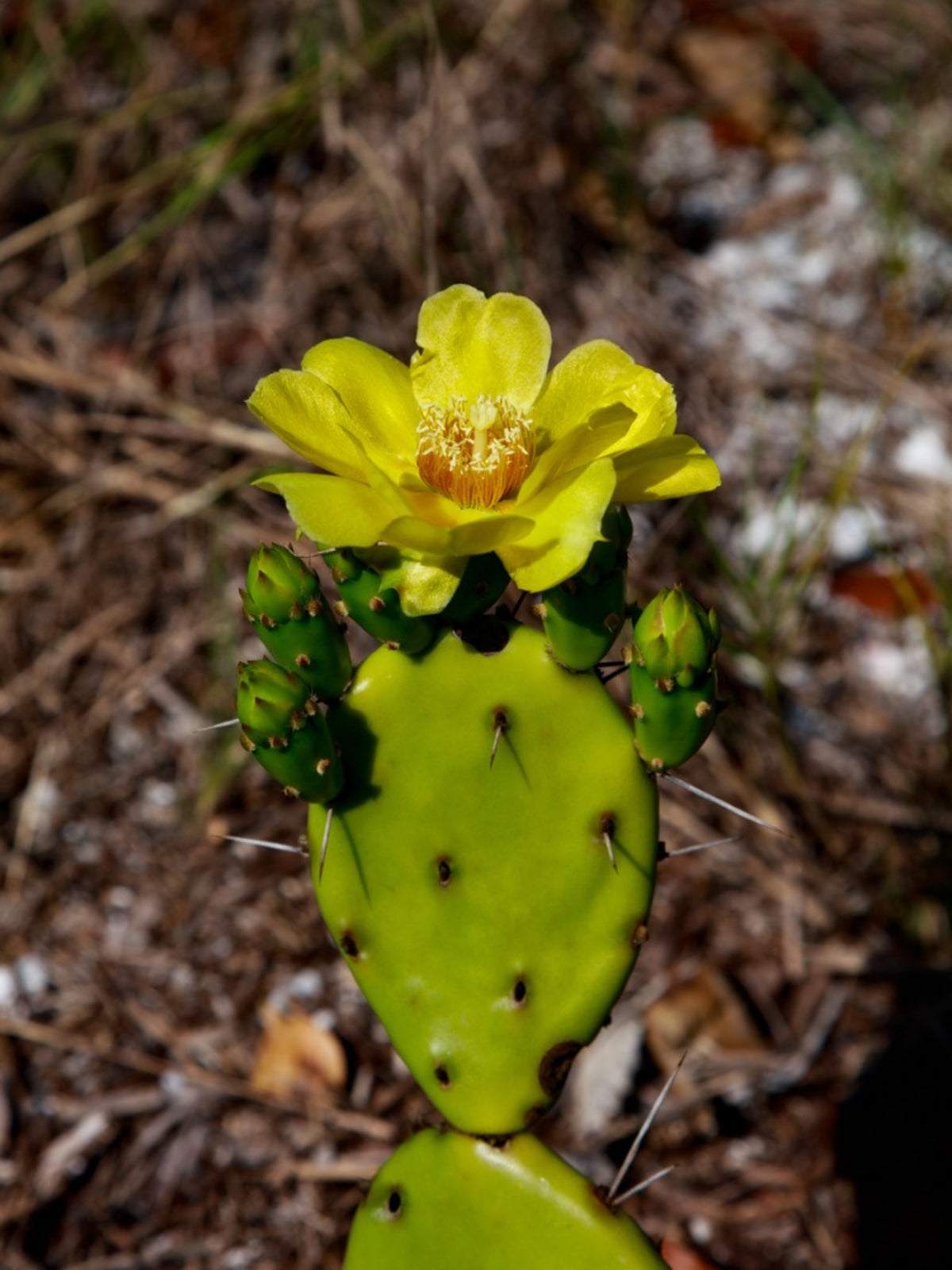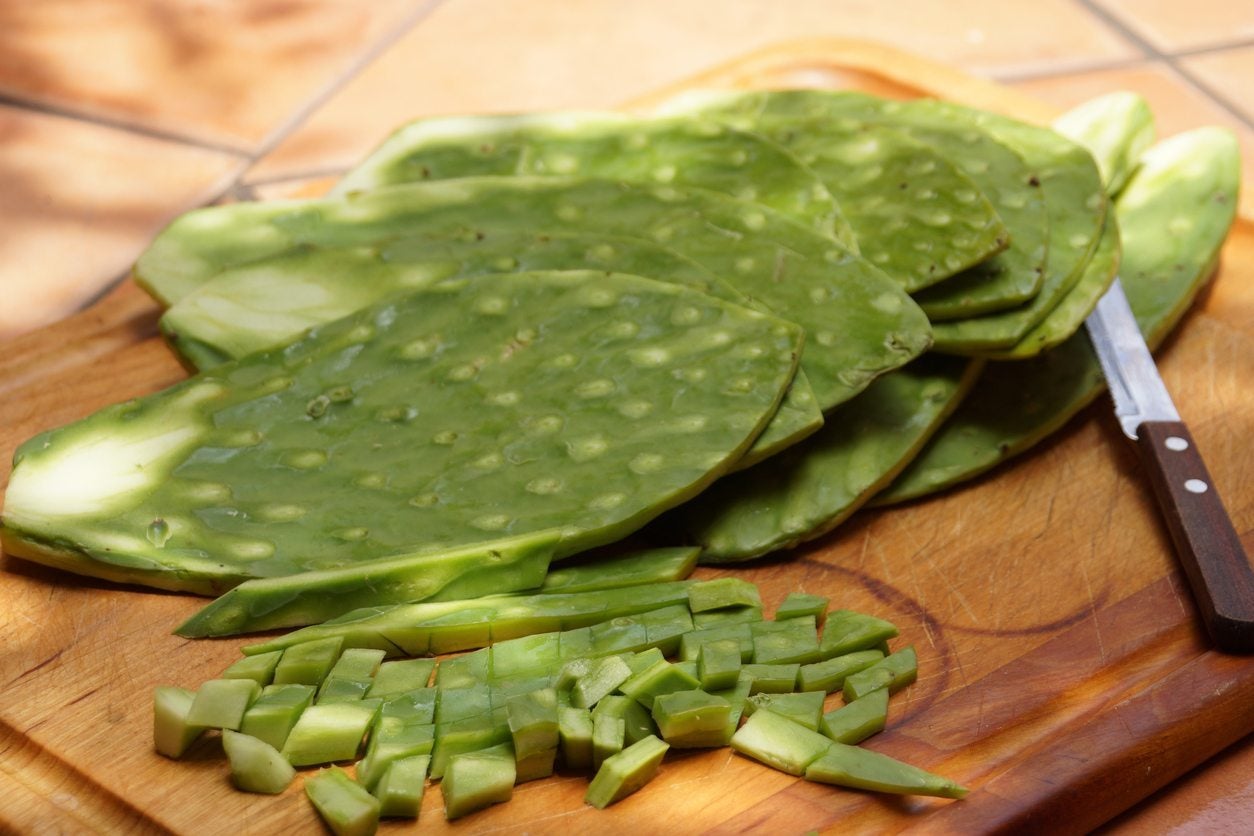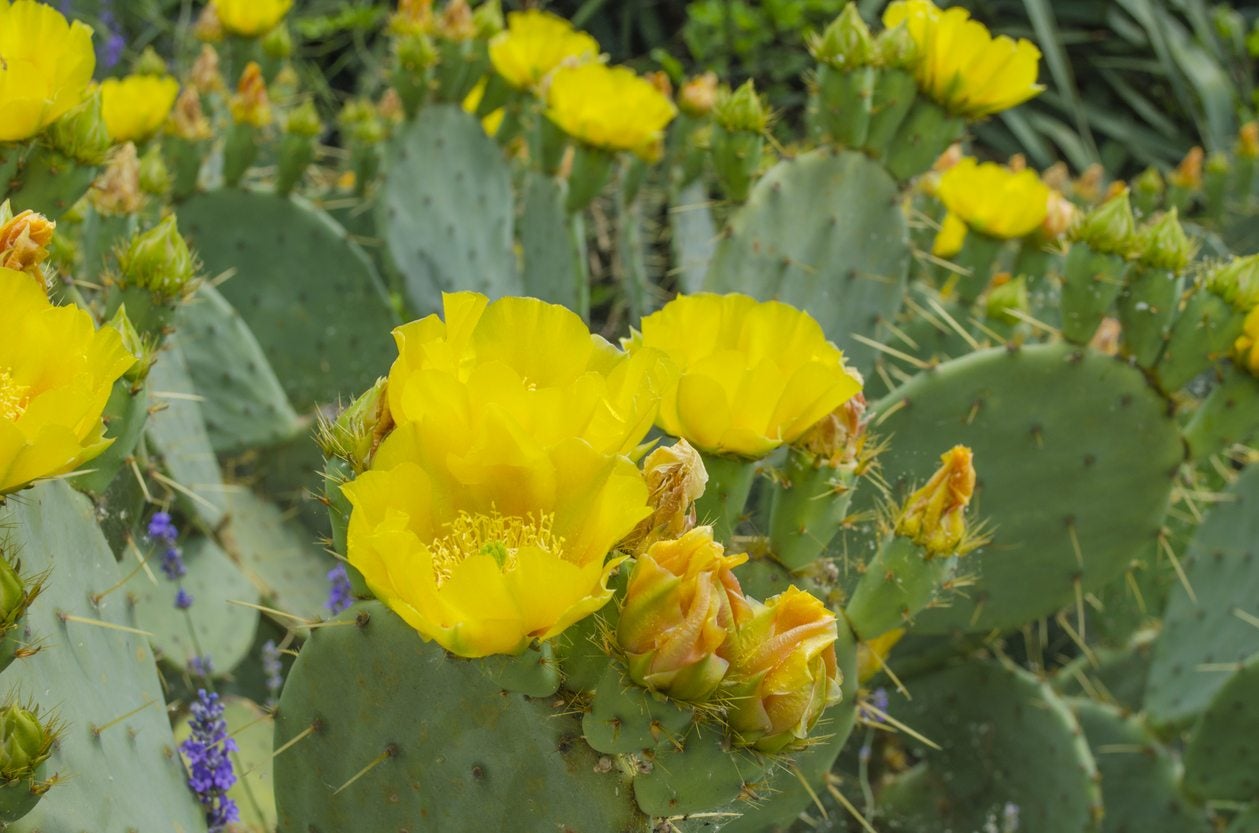Engelmann Prickly Pear Info – Learn About Growing Cactus Apple Plants


Engelmann prickly pear, also commonly called cactus apple plants, is a wide-ranging species of prickly pear. It is native to desert regions of California, New Mexico, Arizona, Texas, and northern Mexico. This is a pretty plant for desert gardens, and it will grow at a moderate rate to fill in large spaces.
Engelmann Prickly Pear Cactus Facts
Prickly pears belong to the cactus genus Opuntia, and there are several species in the genus, including O. engelmannii. Other names for this species are tulip prickly pear, nopal prickly pear, Texas prickly pear, and cactus apple. There are several varieties of Engelmann prickly pear as well. Like other prickly pears, this species is segmented and grows and spreads with multiple flat, oblong pads. Depending on the variety, the pads may or may not have spines that can grow up to three inches (7.5 cm.) long. An Engelmann cactus will grow up to four to six feet (1 to 2 m.) tall and 15 feet (4.5 m.) wide. These cactus apple plants develop yellow flowers at the ends of the pads in spring of each year. This is followed by dark pink fruits that are edible.
Growing Engelmann Prickly Pear
Any southwestern U.S. desert garden is suitable for growing this prickly pear. It will tolerate a variety of soils as long as there is no chance of standing water. Full sun is important and it will be hardy to zone 8. Once your prickly pear is established, you shouldn’t need to water it. Normal rainfall will be adequate. If needed, you can prune the cactus by removing pads. This is also a way to propagate the cactus. Take cuttings of pads and let them root in the soil. There are few pests or diseases that will bother prickly pear. Excess moisture is the real enemy of the cactus. Too much water can lead to root rot, which will destroy the plant. And lack of airflow can encourage a cochineal scale infestation, so trim pads as needed to keep air moving between them.
Gardening tips, videos, info and more delivered right to your inbox!
Sign up for the Gardening Know How newsletter today and receive a free copy of our e-book "How to Grow Delicious Tomatoes".

Mary Ellen Ellis has been gardening for over 20 years. With degrees in Chemistry and Biology, Mary Ellen's specialties are flowers, native plants, and herbs.
-
 Get Ready For A Summer Of Hummers! Grow These Full Sun Hummingbird Plants and Flowers
Get Ready For A Summer Of Hummers! Grow These Full Sun Hummingbird Plants and FlowersIf you’re lucky enough to enjoy a sunny backyard, make sure you are maxing out on your pollinator opportunities and grow these full sun hummingbird plants and flowers
By Tonya Barnett
-
 12 Lush Alternatives To A Lawn For Sustainable Spaces
12 Lush Alternatives To A Lawn For Sustainable SpacesAlternatives to a lawn are beautiful and also beneficial to your local ecosystem and its pollinators. Explore our top picks for plants to replace grass.
By Tonya Barnett
-
 Growing Cold Hardy Eastern Prickly Pear Cactus
Growing Cold Hardy Eastern Prickly Pear CactusFor info on growing cold hardy eastern prickly pear cactus, look no further, just click here!
By Becca Badgett
-
 Spineless Prickly Pear Info – Tips For Growing Ellisiana Prickly Pears
Spineless Prickly Pear Info – Tips For Growing Ellisiana Prickly PearsIf you are among the many gardeners who like cactus but don’t like spines, it may be time to consider installing ellisiana cactus in your backyard, better known as spineless prickly pear. Click here for information on growing ellisiana prickly pear.
By Teo Spengler
-
 Cow’s Tongue Plant Care: How To Grow A Prickly Pear Cow’s Tongue
Cow’s Tongue Plant Care: How To Grow A Prickly Pear Cow’s TongueFolks that live in hot climates often utilize plants that are drought tolerant. A great example is a cow’s tongue prickly pear. Besides having a fabulous tongue in cheek name, it is very tolerant of heat and dry conditions, plus it makes a great barrier. Learn more here.
By Amy Grant
-
 Beavertail Cactus Care – How To Grow A Beavertail Prickly Pear Cactus
Beavertail Cactus Care – How To Grow A Beavertail Prickly Pear CactusBeavertail prickly pear cactus is a clumping, spreading cactus with flat, grayish-green, paddle-like leaves. It glows with brilliant, rose-purple blooms in spring and early summer. Have we piqued your curiosity? Click here for more beavertail prickly pear information.
By Mary H. Dyer
-
 Tulip Prickly Pear Info: Guide To Growing Brown Spined Prickly Pears
Tulip Prickly Pear Info: Guide To Growing Brown Spined Prickly PearsWhat is a tulip prickly pear? This cactus is also known as brown spined prickly pear for its rust to reddish brown spines. If you live in warm, arid regions, learn how to grow brown spined prickly pear and add its unique flowers to your garden. This article will help.
By Bonnie L. Grant
-
 Harvesting Edible Cactus Pads – How To Pick Cactus Pads To Eat
Harvesting Edible Cactus Pads – How To Pick Cactus Pads To EatOpuntia produces several types of edibles. The fruits are delicious in jams and jellies. But can you eat cactus pads? Yes, the broad, succulent pads can be eaten raw or cooked. You just need to know how to pick cactus pads and how to prepare them. This article will help.
By Bonnie L. Grant
-
 Opuntia Barbary Fig Info: How To Grow A Barbary Fig Plant
Opuntia Barbary Fig Info: How To Grow A Barbary Fig PlantOpuntia ficus-indica is more commonly known as a Barbary fig, a variety of prickly pear cactus. This desert plant has been used for centuries as food, fending, and even dye. Growing Barbary fig plants is both rewarding and useful. Learn more in this article.
By Mary Ellen Ellis
-
 Opuntia Cactus Varieties: What Are Different Types Of Opuntia Cactus
Opuntia Cactus Varieties: What Are Different Types Of Opuntia CactusOpuntia is the largest genus in the cactus family. You will recognize most by their classic "prickly pear" appearance. Growing Opuntia in gardens adds desert appeal and unique flora to the landscape. Learn more about the plants in this article.
By Bonnie L. Grant